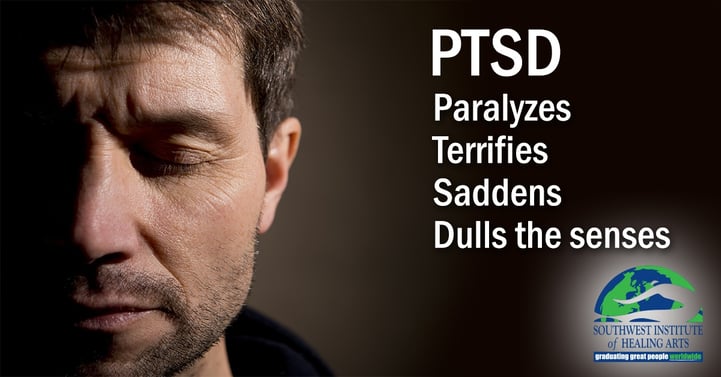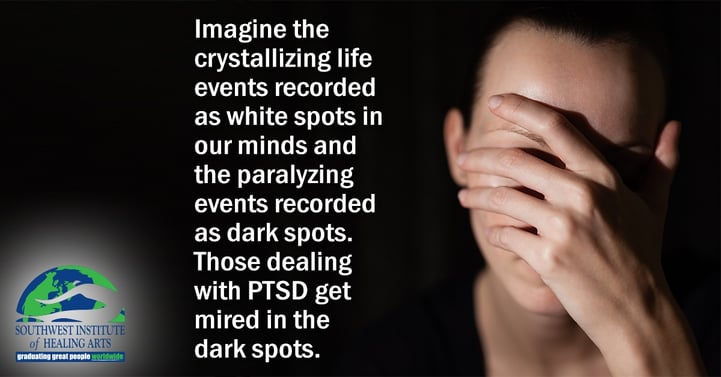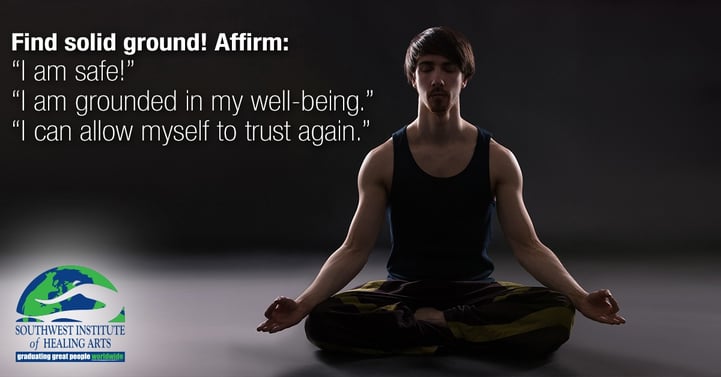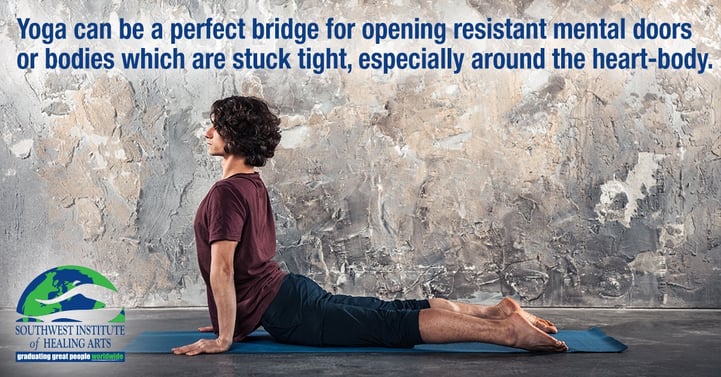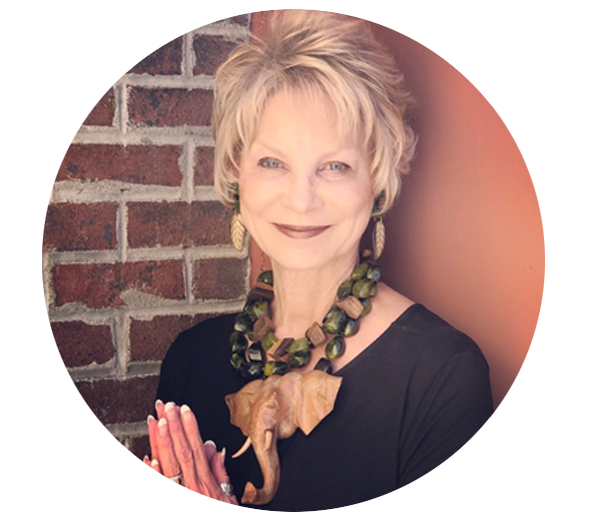PTSD paralyzes, terrifies, saddens, and dulls the senses. We have long known that our mind and body record everything that happens to us. These highs and lows create Richter-scale size memories in our minds, with our emotional “seismograph” documenting the most crystallizing and paralyzing events of our life. If we were to take a metaphorical scan of the mind, we would clearly see PTSD appearing on the “map” as a series of dark, sharp peaks — indicators of turmoil from which it is very difficult to escape. Those dealing with PTSD get mired in those dark spots.
Grieving through the “Dark Spots”
Recently, after over twenty years of distinguished service to his country and three years of trying to reconcile the battles in his mind through intermittent psychiatric hospital stays, my stepson Todd made the permanent decision to end his life.
In the wake of this devastating event, my family has chosen to start seeing PTSD as a dark spot which puts us all at risk of being swallowed up whole. Using the code, “What shade are you today?” we check in with each other about the current state of our emotional sinkholes. “Dark blue” equates depression, while “slightly blue” means sadness; we cherish the day when we can report feeling "hardly blue" at all. We have come to understand that PTSD is a family affair. What one suffers, the others feel as well.
I know that Todd took his own life believing—in the distorted logic of those suffering from PTSD—that doing so would be the best thing for his family. In our eyes, he had so much to live for, and yet he could only see himself as a burden to the ones he loved. It is our hope that one day we will stop replaying the question, “Why did he give up hope?”
Recognizing the Complicated Signs of PTSD
Todd had served as an Air Force Intelligence and Targeting Officer, retiring honorably with the rank of Lieutenant Colonel. Recorded on his death certificate were the words: “cause of death due to severe complications of PTSD.”
PTSD is indeed complicated! Its catastrophic peaks and dark spots show up in both the person who has been diagnosed with the disorder AND that person’s loved ones. They often result in the following:
- Ungroundedness takes center stage.
When someone’s world becomes paralyzed through traumatic experiences—military service, physical or emotional injuries, or having been attached to an idea of how something would always be— they will withdraw, avoid others (including family and friends), and become disconnected and distant.
In our family, we often would find ourselves feeling like Todd just wasn’t “there.” The intelligent military strategist who had once carried the weight of the world on his shoulders didn’t want to get out of bed most days and often couldn’t decide on what to wear or eat, let alone where he felt safe enough to go. Those living with someone with this insidious disorder knows that the entire family vocabulary becomes reduced to, “I’m not sure,” “Let’s wait and see,” and “Maybe this will get better soon.”
- A feeling of being out of control and being powerless arises.
Those who have experienced a paralyzing event will usually report that they didn’t see “it” coming— whatever “it” was. As a consequence, over-controlling behavior comes into play, and when they can’t control a situation or the behavior of others, unrealistic irritability or hyper-arousal symptoms present themselves.
Just as you can never really predict an earthquake, PTSD outbursts or episodes are similar in their eruptive patterns and unpredictability. A seismometer is used to pick up the vibrations in the earth's crust in an effort to ready us for a great upheaval; those living in the same household of the potentially explosive person pray for seismometer-like psychic abilities so as to ready themselves for the sudden and violent shaking of the family foundation. While many get really good at trying to be the family "lifesaver," for the most part, families learns to lives “on edge” and experience an undefined “jumpiness," which translates to feeling powerless.
- Everyone’s “I am” statements and self-identification becomes blurred or victimized.
Although no one really says the words, “I am a victim,” that’s often the bottom-line feeling that they may be experiencing. The expression of this feeling more often sounds like, “I am lost,” “I am confused,” and “I am so frustrated and angry.” All of these are accompanied by the volatile highs and low of, “I am anxious, and I am depressed.” While all of these statements may be true about what the person is feeling in the moment, the important perspective is to remember our feelings are not who we are—or who they are.
PTSD is classified as an anxiety disorder. At the core of this disease, the symptoms seem to relate back to internal cues connected to thoughts, images, and other feelings. Those suffering from PTSD are stuck in reoccurring thoughts that create images, leading to anxious feelings which are often verbalized. Each time anyone in the family unit uses a strong negative or anxious “I am” statement, it serves as reinforcement of dark holes.
- Our hearts close, and emotional numbing becomes the norm.
The direct PTSD sufferer sometimes comes across as heartless and selfish. As a result of the secondary PTSD, family members overdevelop survival skills and protect their heart, trapping themselves in a chess game of life. Emotional movements are pre-strategized, guarded, and carefully executed, or not. There are manic, “live-for-the-movement” rash decisions made and emotional outbursts expressed. The emotional kaleidoscope is exhausting, unpredictable, and sometimes as scary as a carnival ride.
- The throat chakra is cataclysmically affected.
Speaking the truth becomes almost impossible, mostly due to the fear of upsetting the precarious PTSD applecart. Words are held back or choked down. Just as the heart is numbed, the throat swells with unexpressed emotions and fears.
- Everyone’s ability to trust their intuition is shut down.
Anecdotally, those who initially suffer from PTSD are likely to be described as highly sensitive and intuitive people. “One of the hallmark characteristics of highly sensitive people is the ability to feel more deeply than their less-sensitive peers,” says Ted Zeff, Ph.D., author of The Highly Sensitive Person’s Survival Guide. “They like to process things on a deep level,” cautions Dr. Zeff, and he counsels that, “highly sensitive individuals must learn to master their sensitive nervous system, or operating in a constant state of overstimulation.”
It appears that there are deep correlations between those who suffer from PTSD and those who would be labeled as “highly sensitive.” From personal observation, the members involved in our family’s tragedy had become very sensitized to emotional waves within the family and within the world. Our intuition has intensified; the key is to truth it again.
- A tumultuous or overzealous relationship to Source and/or religion occurs.
The pendulum swing of spiritual struggle seems to accompany PTSD, ranging from attributing the stressful event to punishment from God (or the work of evil forces) to becoming very committed to “saving” those around them from the wrath of God. Unfortunately, spiritual discontent and confusion has been related to higher levels of depression and hopelessness in PTSD sufferers.
Seven Steps to Restore Hope
Naturally, the above dark spots can result in the complete loss of hope, which in turn creates the space for devastating action. Statistics suggest that 22 veterans a day commit suicide due to the complications of PTSD. Let’s look at seven steps developed from life coaching practices that we can take to clarify our experience with this disorder and restore a bit of our sanity— our hope!
- Find solid ground once again.
Trust— or the lack thereof—is a gigantic factor in PSTD. Learning to re-trust and re-ground is a slow process. Trust must be re-established with self, others, and the Divine. A simple yet very effective starting point is to sit touching the earth with your fingertips or sitting quietly with your hands turned toward the ground so as to “ground” down. This is a perfect position from which to pray, meditate, or simply affirm: “I am safe,” “I am grounded in my well-being,” “I can allow myself to trust again.”
- Breathe
Breath is always the one thing we can control. Thich Nhat Hanh, author of The Miracle of Mindfulness and many other books, teaches this: “Breath is the bridge which connects life to consciousness, which unites your body to your thoughts. Whenever your mind becomes scattered, use your breath as the means to take hold of your mind again.” Breathe yourself sane. Use breath to restore hope!
- Choose your “I am” statement carefully.
Use powerful life coaching affirmations like:“I am resilient,” “I am capable,” “I am hopeful.” Say with conviction what it is you deeply desire to be your new body-felt truth.
- Consciously open your heart.
While this may sound like it is “easier said than done,” opening the heart starts with opening the mind and body. Yoga can be a perfect bridge for opening resistant mental doors or bodies which are stuck tight, especially around the heart-body.
- Embrace sound!
Sing, chant, write, read aloud, and shout it out! Sound healing is vibrational healing. The more you allow your throat to open, the more healing can happen. Polarity Therapy is system of healing that incorporates sound, movement exercises, and bodywork for the purpose of restoring balance to the mind and body. It can serve as a healing container for those looking to restore hope.
- Use visualization and Mindful Guided Imagery to open the blocks to intuition and pave the way to new ways of seeing things differently.
When you begin to see a new, peaceful, calmer, connected life in your inner mind, your outer world begins to change, mirroring the vividness of your new hopeful visions.
- Practice loving-kindness toward yourself and others.
One of the great commandments honored by most religions in one form or another is to love others as you have first loved yourself. As you practice loving-kindness toward yourself as a form of spiritual self-care, the reservoir of self-compassion will overflow so as to extend to those around you suffering from PTSD or any kind of unconsciousness.
As Martin Luther King, Jr. taught,“We must accept finite disappointment, yet never lose infinite hope.” While it is true that PTSD is complicated, there is a simple acronym for HOPE:
Honor
Other
People’s
Experiences
“Be kind. Everyone you meet is fighting a battle you know nothing about.”
SWIHA lives and operates by our mission, as well as our eleven core values, one of which is to create and maintain a safe container for the personal growth and healing of all who enter our doors. It is our commitment to this core value that motivated us to create a version of our Mind-Body Wellness Practitioner Diploma intended to serve those who have given of themselves in service to our country.
In our desire is to give back to those with PTSD, those in their community who support them, and the professional coaches and practitioners who are drawn to serve them, we have created a program focused on bringing balance into people’s lives through Yoga, Life Coaching, Mindfulness, and Nutrition.
This program is taught and facilitated by teachers with significant experience as PTSD-informed holistic practitioners or veterans themselves. For more information please call: (888) 504-9106
Special Aid for Military Members
We are approved by the State of Arizona Department of Veterans Services for GI Bill benefits.
Southwest Institute of Healing Arts is approved by the Arizona Veterans Education and Training Approving Agency (VETAA) to offer Veteran Educational Benefits for many of our educational programs. SWIHA received its initial approval to provide VA funding to its students more than 16 years ago. Since that time, we have proudly served Veterans by offering holistic healthcare education in a variety of programs. The choice to comply with all the regulations associated with offering VA funding is in alignment with SWIHA’s core values and those of our Founders. To this day, serving veterans remains in alignment with our core values of respect, life-long learning, self-healing, empowerment, individuality, diversity, and community. We seek to provide an educational environment for all people, cultures, and beliefs to come together to change their lives, heal their bodies, and free their souls.

